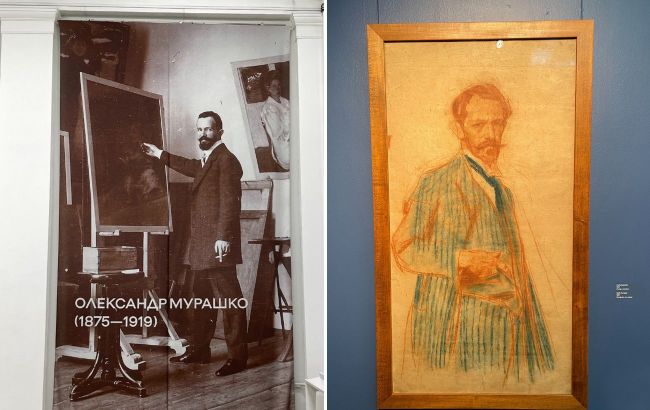From Venice to Kyiv: Tragic path of Ukrainian Cezanne Oleksandr Murashko
 The tragic path of Oleksandr Murashko, who founded Ukrainian modernism (Collage: RBC-Ukraine)
The tragic path of Oleksandr Murashko, who founded Ukrainian modernism (Collage: RBC-Ukraine)
Oleksandr Murashko is one of those Ukrainian artists who is known internationally but remains relatively unknown in Ukraine. His works were exhibited in Venice, Munich, and Paris; critics compared him to European modernists, and he himself aspired to establish a new art school in Kyiv. In 1919, Murashko was killed under mysterious circumstances, but his artistic legacy became the foundation of 20th-century Ukrainian modernism.
Who was Oleksandr Murashko
Oleksandr Murashko (1875-1919) was a Kyiv-based painter who worked at the intersection of realism, impressionism, and modernism. He was the nephew of Mykola Murashko, the founder of the Kyiv Drawing School, giving him strong local roots in art.
After studying at the St. Petersburg Academy of Arts and completing an internship in Munich, Murashko became one of the first Ukrainian artists whose style was simultaneously deeply national and fully European.
His style was ahead of Ukraine by decades
Murashko's signature touch featured pure emotion, light, and colors that seemed to breathe.
His most famous works include:
Girl in a Red Hat

Painting by Oleksandr Murashko (photo: Wikipedia)
Carousel

Sketch for the painting "Carousel" (photo: Wikipedia)
At the Café

Painting "At the Café" (photo: Wikipedia)
The artist boldly worked with contrasts, anticipating modernist waves that were only entering Europe and the United States. Critics called him the "Ukrainian Cézanne," though Murashko followed his own trajectory closer to the emotive style of Art Nouveau and the individualism of Parisian art.
European career that could have been even greater
Murashko exhibited in:
- Munich (Glaspalast)
- Venice (Biennale)
- Paris
- Amsterdam
- Rome
He received awards at international exhibitions and became one of the few Ukrainians at the time with a stable demand in Europe. Private collectors in Germany and France purchased his works.
Murashko wanted to change Ukraine
In 1913, he returned to Kyiv with a clear ambition: to create a modern art education system.
Together with other artists, Murashko advocated for the opening of an Academy of Arts. In 1917, this project came to fruition: the Ukrainian Academy of Arts was established, and Murashko became one of its first professors.
In effect, he laid the groundwork for what is now called "Kyiv modernism."
Mysterious death that remained silent for decades
On June 6, 1919, the artist was shot near Lukianivka. The official version claimed it was a robbery. However, art researchers from past decades pointed to other possibilities:
- Murashko actively advocated for Ukrainian cultural autonomy
- He taught at the new Academy, which symbolized independent aspirations
- He was critical of the Bolshevik authorities
All these factors make his death suspicious. The true motives remain shrouded in the darkness of the era, but one thing is clear: it was a catastrophe for the young Ukrainian art school.
Legacy returning home
Today, Murashko's works are housed in museums in Kyiv, Lviv, and Kharkiv, as well as in private collections in Europe and the United States. He became a symbol of Ukrainian modernism and an example of how a local art school can achieve global significance.
The reintegration of Murashko into Ukrainian cultural discourse is one of the key processes in restoring our artistic memory over the past 10-15 years.
Earlier, we wrote about a Ukrainian who taught all of Europe to drink coffee.
Sources: National Art Museum of Ukraine, Encyclopedia of Modern Ukraine, Khanenko Museum.

